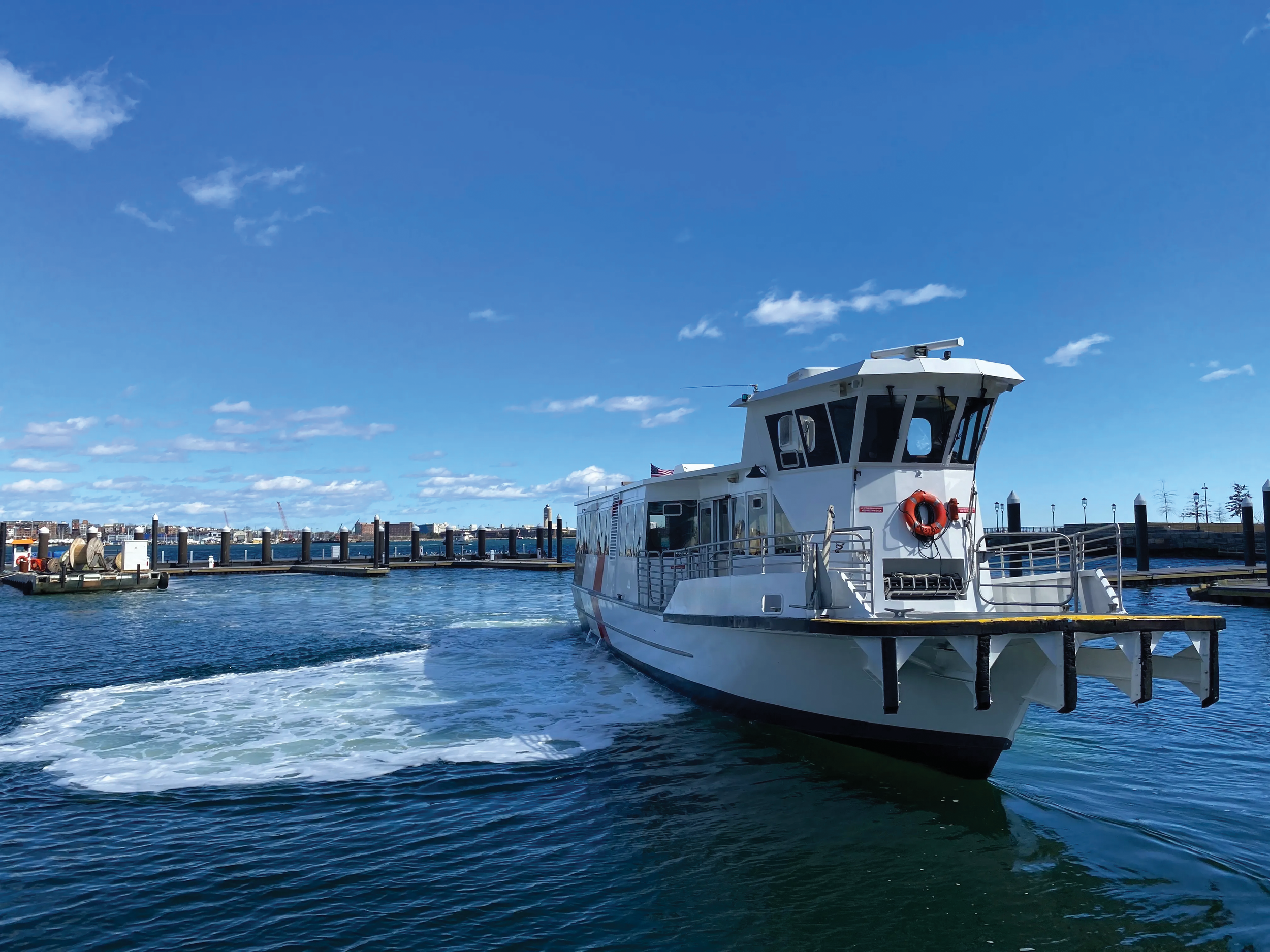
Rider’s Guide
Looking for Information on Water Transit?
Whether you’re new to Boston, new to taking the many ferries, water shuttles, or water taxis in Greater Boston, or simply looking for information on a particular service or route, this rider’s guide will provide everything you need to ride the waves!
FAQs
Take a look at the frequently asked questions to help you navigate taking the boat in Boston!
-
There are several docks in and around Boston. For a comprehensive look at all of your options, or to find a dock closest to you, visit our Ferry Roundup to learn more.
-
Riding a ferry is much like taking a train or bus. Make sure you have your ticket ready, and that you arrive at the dock a few minutes before the scheduled departure. If you are using a special vacation ferry service, like the Provincetown Ferries, you may need to arrive earlier. Be sure to check the service provider’s website to see if they have a specific requirement.
Depending on the ferry, it may take a few minutes before the ferry leaves the dock or before you are allowed off of the boat at your destination. The crew needs to tie the boat to the dock and set up the ramp to allow passengers to safely board and disembark.
If you want to know something specific to taking the MBTA ferry, please refer to the MBTA’s Ferry Rider’s Guide for more information. Learn more about riding the Seaport Ferry on their website.
-
No, different ferry providers have different ticketing processes. The MBTA ferries use the mTicket app (the same as the Commuter Rail), and the Seaport Ferry uses the Seaport Ferry app. Private ferries, like the Provincetown and Salem ferries, use prescheduled, online ticketing. Check the service provider’s website to be sure you are ready to ride.
-
Typically, water shuttles, which consistently make trips from point A to point B on a fixed schedule, will allow you to ride either for free or by purchasing a one-way or roundtrip ticket. To know the specifics of how a particular shuttle operates, you’ll find this information on their website.
Water taxis are different from shuttles in that they provide on-demand service, such as the Boston Water Taxi. They have a pre-defined service area of eligible pick-up/drop-off locations, but you tell them which stop to be picked up at and when. First, you purchase your fare, then you can call the taxi’s number to reserve your pick-up time and place or reserve your spot online. Water taxi companies will then ensure you arrive at your desired drop off spot in a timely manner. Make sure you provide the taxis with ample time when you call to schedule.
Please note that these boats are much smaller than typical ferries and often require a step down from the dock—so be aware that they are not typically ADA-accessible, and entering and exiting the boat may be difficult for some passengers with limited mobility.
-
Yes! Riding a bike is one of the best ways to reach the ferry. All ferries that operate in Boston Harbor allow bicycles.
Please note that the Provincetown Ferry has an additional fee for bikes.
-
All ferries that operate in Boston Harbor are accessible.
Water taxis and shuttles often are not.
-
All ferries in Boston Harbor are equipped with ramps, making them both stroller- and wheelchair-friendly.
Water taxis and shuttles do not usually have ramps, and you should inquire with the provider directly to find out.
Routes
Three new routes came to Boston Harbor in 2025! The MBTA Quincy Ferry, the MBTA Winthrop Ferry, and the Seaport/Pier 10 Ferry will create new ways to get around Greater Boston. Check out why each new route is so important and get a comprehensive look at all water transit routes and services in Boston in our Ferry Roundup. You’ll learn where to board, when to board, and how much to pay for your ride. Plan your trip today!
Destinations
The water transportation network in Greater Boston is ever-expanding to provide better mobility for commuting, taking day trips, and sightseeing. If you don’t know where you might take the boat, take inspiration from the many destinations connected by water transportation.
Where will you go?







